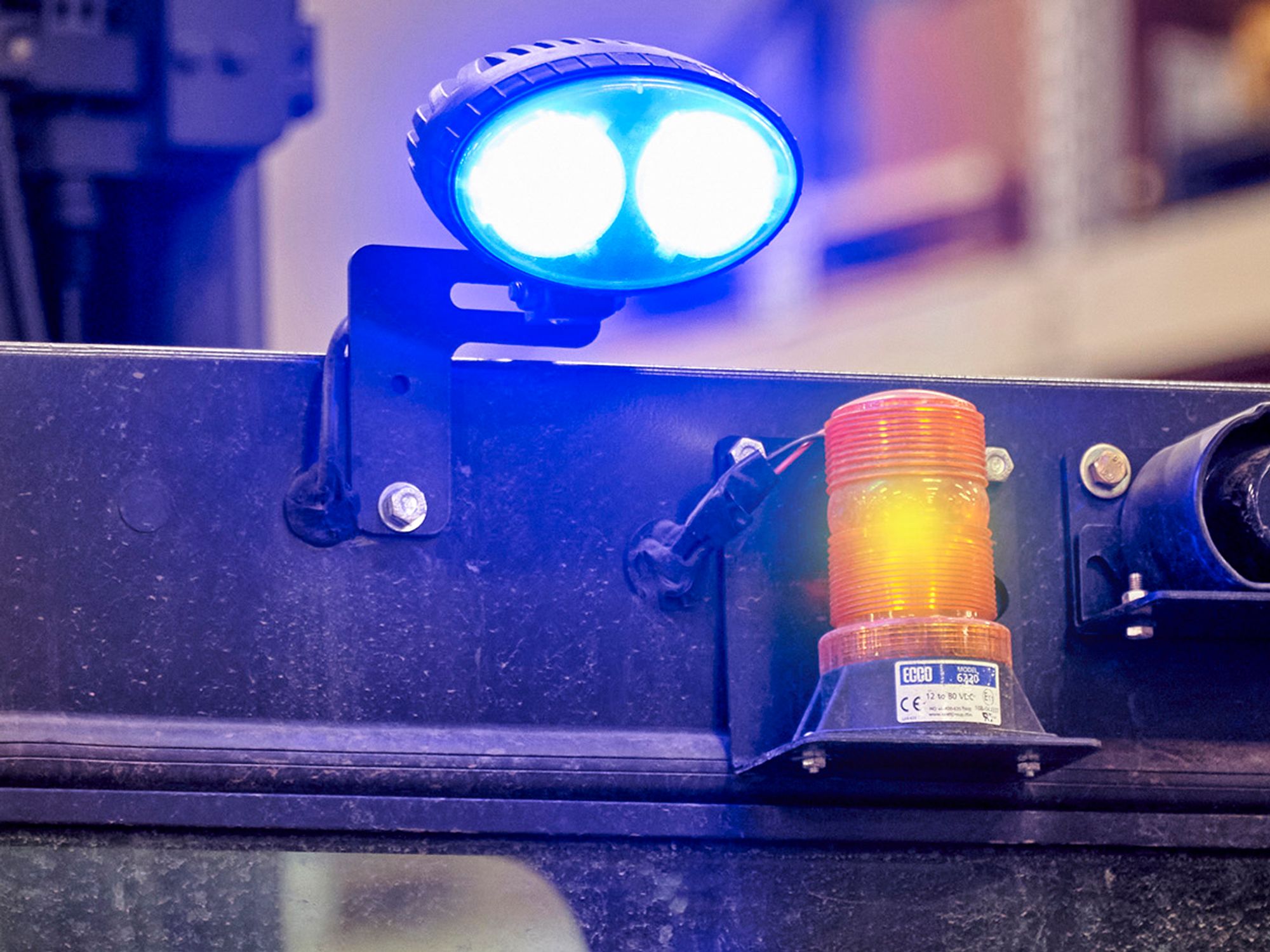What requirements apply to safety devices, lights?

- Employers must ensure the use of safety devices such as seat belts and horns on PITs.
Powered Industrial Trucks (PITs) can incorporate many warning and safety devices to help protect operators, pedestrians, and other PIT operators. Some are required, some recommended, and some required only in certain instances.
The Occupational Safety and Health Administration (OSHA) specifically requires an operator-controlled horn for PITs.
OSHA also requires directional lighting when general lighting is less than two lumens per square foot. For example, the general lighting in an inspected warehouse where PITs were used was less than 1 lumen per square foot, and the trucks did not have directional lighting. OSHA cited the company for a willful violation, which brought a $62,537 penalty.
As far as other beepers/lights (such as backup warnings and strobe lights), there is no specific requirement, but OSHA has said that if these warnings are needed based on the specific operating conditions, then the Agency could cite employers under the General Duty Clause of the Occupational Safety and Health Act.
What about seat belts?
OSHA’s current enforcement policy is that employers must require operators of equipment that are equipped with operator restraint devices, including seat belts, to use the devices.
In addition, OSHA may also cite employers who do not take advantage of a manufacturer operator restraint system or seat belt retrofit program. Two enforcement cases illustrate this approach:
- Case 1 — An OSHA inspector witnessed an employee operating a forklift without wearing the required seat belt that was provided. The employee was moving product around the refrigerated warehouse. The inspector cited the warehouse under the General Duty Clause (Section 5(a)(1) of the OSH Act). The citation explained that the employer did not ensure that employees operating PITs use seat belts, exposing employees to the hazard of falling out of and being struck by the PIT. The citation suggested that one feasible and acceptable abatement method to correct this hazard is to require all operators to read and follow the manufacturer’s operator manual and abide by the safety rules and practices, in accordance with ANSI B56.1, Safety Standard for Low Lift and High Lift Trucks.
- Case 2 — In another case, a forklift collided with a concrete column, and the operator died after being thrown from the forklift. California OSHA says the worker was not wearing a seat belt. However, the agency also discovered that two safety devices were disabled. Proposed penalties climbed up over $205,000. The citations included four serious violations for the employer’s alleged: failure to ensure that forklift operators use seat belts; failure to properly maintain and inspect forklifts; failure to ensure operators were effectively trained; and improper alterations of forklift safety features. The company was also issued a citation for a willful violation for allegedly failing to ensure workers perform a forklift safety check at the beginning of each shift and report unsafe conditions, a violation the company was also cited for in a previous year.
